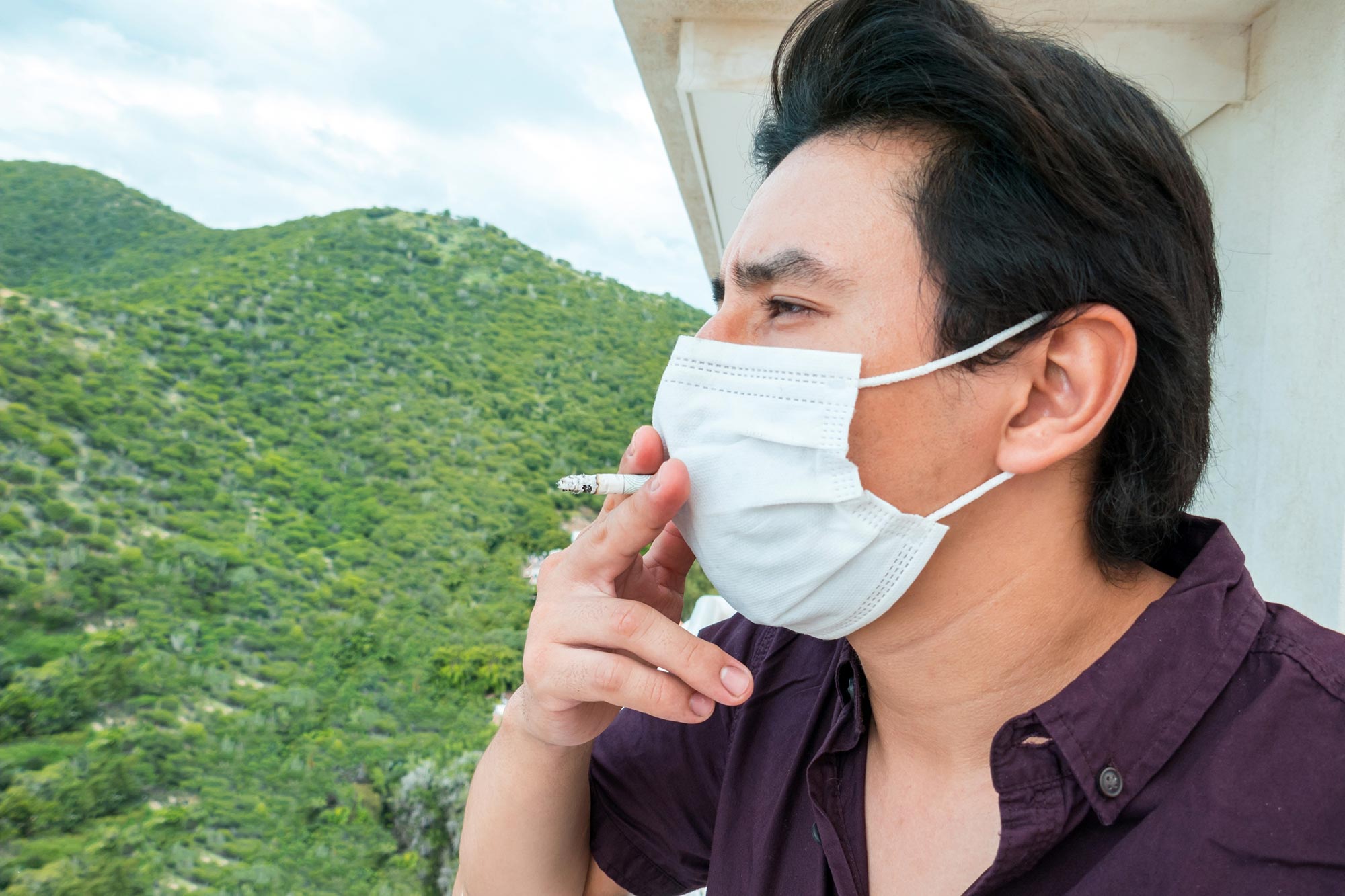
Smoking traditional or non-combustible cigarettes while wearing a surgical mask results in a two-fold rise in exhaled carbon monoxide and impaired blood vessel function compared to non-mask periods. That’s the finding of research published today in the European Journal of Preventive Cardiology, a journal of the ESC.1
“The study suggests that smoking any tobacco product has become even more hazardous during the COVID-19 pandemic because of the need to wear a mask for long hours,” said study author Professor Ignatios Ikonomidis of the National and Kapodistrian University of Athens, Greece. “Prior research has shown that impaired vascular function is linked with heart problems and premature death.”
The study focused on traditional (combustible) cigarettes and non-combustible cigarettes, also called “heat not burn” or “heated” tobacco products. Non-combustible cigarettes contain tobacco which is electronically heated to a lower temperature than a combusted cigarette, delivering an inhalable aerosol containing nicotine. The study did not include e-cigarettes (also called vaping) which electronically heat a liquid containing nicotine to create an aerosol that is inhaled.
The researchers investigated the levels of exhaled carbon monoxide in smokers while wearing a mask during working hours and compared it to carbon monoxide levels during days off without a mask. In a second step, the researchers examined whether the change in carbon monoxide exposure was accompanied by impaired blood vessel function.
The study included 40 smokers of conventional cigarettes, 40 exclusive heat not burn cigarette users and 40 non-smokers with similar age and sex who were medical personnel in a university hospital. Individuals with known cardiovascular disease, hypertension, diabetes, dyslipidaemia, chronic kidney disease or atrial fibrillation were excluded as these conditions may affect vascular function.
The researchers measured exhaled carbon monoxide after a deep breath and markers of vascular function (pulse wave velocity, augmentation index and central systolic blood pressure). Baseline assessments were done early in the morning after sleeping without a mask to obtain values after a long period without smoking. Participants were randomised to a second assessment after either an eight hour shift wearing a mask or eight hours off without a mask. They then crossed over to a third assessment after either eight hours off with no mask or eight hour working with a mask.
The average age of participants was 45 years and 72% were women. A similar number of combustible or non-combustible cigarettes were smoked during mask and non-mask periods. In conventional cigarette smokers, exhaled carbon monoxide increased from 8.00 parts per million (ppm) at baseline to 12.15 ppm with no mask and 17.45 ppm with a mask. In non-combustible cigarette smokers, exhaled carbon monoxide increased from 1.15 ppm at baseline to 1.43 ppm with no mask and 2.20 ppm with a mask. Among non-smokers, exhaled carbon monoxide did not differ between the baseline, non-mask and mask periods.
In both combustible and non-combustible cigarette smokers, all vascular markers were higher while wearing a mask compared to no mask. In non-smokers, there were no differences in vascular markers between the three periods.
Professor Ikonomidis said “Compared to smokers of combustible cigarettes, non-combustible cigarette users had lower baseline carbon monoxide levels and smaller increases in vascular damage while wearing a mask. Nevertheless, the findings show that smoking any tobacco product while wearing a mask may further impair blood vessel function compared to non-mask periods, at least partly due to greater re-inhalation of carbon monoxide and/or vapour rich in nicotine. The results provide even more impetus for all smokers to kick the habit.”


Leave a Reply